Myopia bilateral, also known as bilateral myopia or myopia in both eyes, is a common vision problem that affects people of all ages. It is a refractive error that causes difficulty in seeing distant objects clearly.
What is Myopia Bilateral?
Myopia bilateral is a condition in which both eyes are affected by myopia. In this condition, the eyeball is too long or the cornea is too curved, causing light to focus in front of the retina instead of on it. This results in blurred vision when looking at distant objects.
Causes of Myopia Bilateral
The exact cause of myopia bilateral is not known, but it is believed to be a combination of genetic and environmental factors. If one or both parents have myopia, the child is at a higher risk of developing myopia bilateral. Environmental factors such as spending too much time on close-up work like reading or using electronic devices can also contribute to the development of myopia bilateral.
Symptoms of Myopia Bilateral
The most common symptom of myopia bilateral is difficulty seeing distant objects clearly. Other symptoms may include:
- Squinting to see distant objects
- Headaches
- Eye strain
- Fatigue
- Blurred vision
Treatment Options for Myopia Bilateral
There are several treatment options for myopia bilateral, including:
- Eyeglasses or contact lenses: These can help correct the refractive error and improve vision.
- Orthokeratology: This involves wearing special contact lenses overnight to reshape the cornea and improve vision during the day.
- Refractive surgery: This includes LASIK, PRK, and other surgical procedures that permanently reshape the cornea to improve vision.
How is Myopia Bilateral Diagnosed?
Myopia bilateral is diagnosed through a comprehensive eye exam. During the exam, the eye doctor will measure the refractive error of each eye and determine the best course of treatment.
Comprehensive Eye Exam
A comprehensive eye exam may include the following tests:
- Visual acuity test: This measures how well you can see at various distances.
- Refraction test: This determines the exact prescription for eyeglasses or contact lenses.
- Eye movement test: This evaluates how well your eyes move and work together.
- Eye pressure test: This measures the pressure inside the eye.
- Retinal exam: This examines the back of the eye to check for any abnormalities.
Prevention of Myopia Bilateral
While myopia bilateral cannot be prevented, there are steps you can take to reduce your risk of developing it. These include:
- Taking breaks from close-up work like reading or using electronic devices.
- Spending more time outdoors.
- Having regular eye exams.
Conclusion
Myopia bilateral is a common vision problem that affects people of all ages. It is a refractive error that causes difficulty in seeing distant objects clearly. While it cannot be prevented, it can be treated with eyeglasses, contact lenses, or refractive surgery. It is important to have regular eye exams to detect and treat myopia bilateral early to prevent further damage to the eyes.
FAQs
- What is the difference between myopia and myopia bilateral?
- Myopia is a refractive error that causes difficulty in seeing distant objects clearly, while myopia bilateral is a condition in which both eyes are affected by myopia.
- Can myopia bilateral be cured?
- While there is no cure for myopia bilateral, it can be corrected with eyeglasses, contact lenses, or refractive surgery.
- Can wearing glasses or contact lenses make myopia bilateral worse?
- No, wearing glasses or contact lenses will not make myopia bilateral worse. In fact, they can help correct the refractive error and improve vision.
- Is myopia bilateral hereditary?
- Myopia bilateral is believed to be a combination of genetic and environmental factors. If one or both parents have myopia, the child is at a higher risk of developing myopia bilateral.
- What are the environmental factors that contribute to myopia bilateral?
- Spending too much time on close-up work like reading or using electronic devices can contribute to the development of myopia bilateral.








